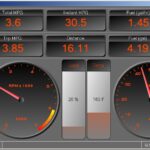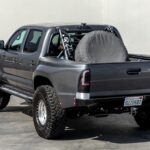A skid steer loader is a valuable asset for various tasks, from moving materials to land clearing. However, reliability is paramount. This post explores the factors to consider when choosing a tracked skid steer, drawing from the experience of a Bobcat T770 owner seeking a more dependable machine.
Key Considerations When Replacing a Skid Steer
The original poster’s Bobcat T770, while functional, has suffered from recurring issues, including idler failures, A/C problems, drive hub bearing failure, and electrical issues. A recurring problem with the belt idler, reportedly needing replacement every 600-800 hours according to a dealer, highlights the importance of long-term reliability. With plans to trade for a newer tracked skid steer in the coming years, several factors warrant consideration:
Attachment Compatibility
Ensuring compatibility with existing attachments, particularly a forestry mulcher, is crucial. The new skid steer must have sufficient hydraulic flow and pressure to operate the mulcher safely and efficiently. Checking the attachment’s specifications and comparing them with the potential skid steer’s capabilities is essential. This often involves confirming compatibility with the skid steer’s quick attach system.
Brand Reliability and Dealer Support
While the poster has access to good dealer support for various brands like Case, Deere, and Kobota, brand reputation for reliability should play a significant role in the decision-making process. Researching online forums like a dedicated “Skid Steer Forum” can provide valuable insights into the real-world experiences of owners with different brands. Topics to research include common issues, maintenance costs, and overall durability. Even considering another Bobcat remains an option if the experienced issues are industry-wide rather than brand-specific.
Specific Features for Forestry Work
Given the importance of forestry work, features like high ground clearance, powerful hydraulics, and a robust undercarriage are vital. A forestry mulcher demands a significant amount of power, and the skid steer must be able to handle the stresses involved. Additionally, good visibility is crucial for safe operation in wooded areas.
Making the Right Choice: Research and Due Diligence
Choosing a new tracked skid steer requires careful research. Consulting online resources, particularly a “skid steer forum,” provides firsthand accounts from other owners. Comparing specifications, seeking dealer input, and understanding the long-term costs associated with each brand are essential steps. Ultimately, the goal is to find a machine that balances performance, reliability, and compatibility with existing attachments. The right choice will ensure efficient operation and minimize downtime for years to come.

